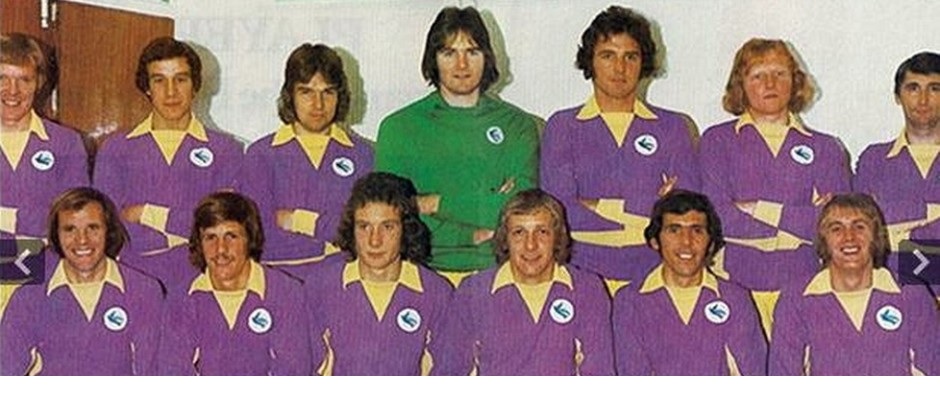
No preamble with this one, except to say it’s hard to see anything other than another defeat tomorrow, just straight into the questions.
60s. If you’re old enough, you’ll probably get this as soon as you read that he would, surely, have got into a sixties bald footballer eleven, but, for those of you who are still none the wiser, here’s some more on the subject of this question.
A Scot who went to Northern Ireland to get noticed in England, this winger began his Football League career in stripes with a team that were probably regarded as cup specialists at the time. However, he only played twenty odd times in his four years with the club and left for the place with the UK’s longest pier as part of a swap deal. Within a few months, he was on the move again, this time to Norwich where he spent close to a decade as a regular first teamer and he returned to the First Division at the end of it for a stint at another striped team in the north. His final move as a professional took him into the lower divisions for the first time where he had a couple of players who would go on to win one hundred and twenty four England caps between them as team mates. Returning to east Anglia, he became player manager of a non league coastal town side and, staying on after he quit playing, he was there for twenty years before moving inland for a further seven years in charge of a team he took to Wembley to win the FA Vase. Can you name him?
70s. This Scottish full back began his career playing at what became the oldest ground in continuous use in the country until its closure and replacement by a stadium with a much more prosaic name. The old ground was used in a Hollywood film that was released just as it stopped being used by the club that had played there for all of that time. Thirty six years before the ground’s closure, the subject of this question had moved south to play in stripes for a club where a future City manager would be a rival for a place in the first team. This helps explain why our man played as little as six times in two years before his move to Norwich where he clocked up getting on for two hundred league appearances over a seven year period before a return to play a further season at that ground where he had started, who am I describing?
80s. Danger of best ham being scoffed before beginning of afternoon. (6,8)
90s. Aurally order snow?
00s. Scottish admiral between the sticks who never played a game for Norwich.
10s. Designate bagel by the sound of it!
20s. Sounds like the talking clock is imminent!
Answers
60s.Bill Punton was spotted by Newcastle while playing for Portadown and moved to St James Park in 1954. After a few months with Southend, he signed for Norwich in 1959 and stayed there until 1967, next was a short stay with Sheffield United before he joined Scunthorpe who, during his early months there, had Ray Clemence on their books, while Kevin Keegan was there for the duration of Punton’s two year stay. Punton left Scunthorpe in 1969 to become player manager of Great Yarmouth Town and stayed in post as manager until 1990 before taking over at Diss Town where his seven year tenure included the wining of the FA Vase in 1994.
70s. Alan Black’s early football was played at Boghead Park, Dumbarton. The ground was used in the Robet Duvall film A Shot at Glory because of what Wikipedia describes as its ramshackle nature and had been closed by the time the film wet on general release. Black had Len Ashurst as a rival for his place at Sunderland and left for Norwich after two years when he had definitely been a second choice, He was part of a promotion team though at Norwich and left for a final season at Dumbarton after he lost his place in the Canaries First Division team.
80s. Graham Benstead.
90s. Ruel Fox.
00s. Stuart Nelson.
10s. Mark Bunn.
20s. Timm Klose



